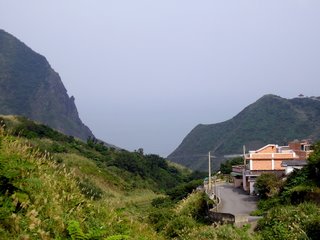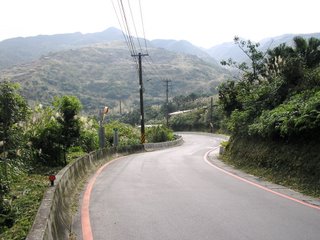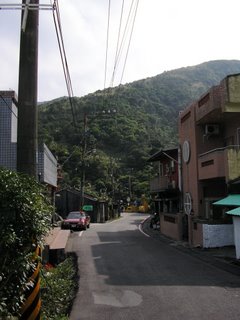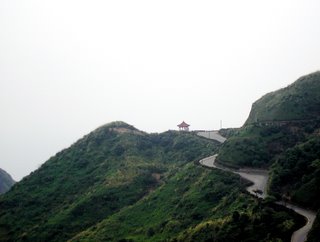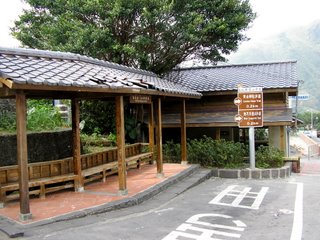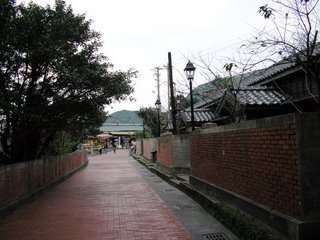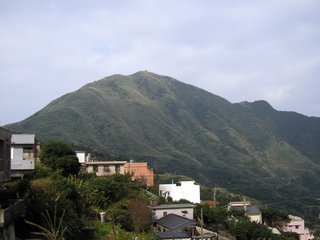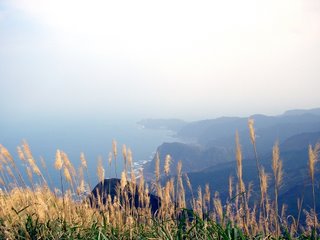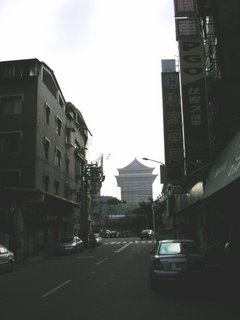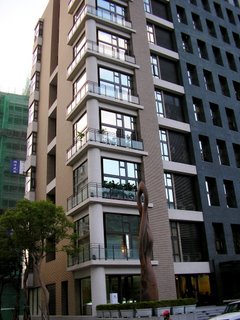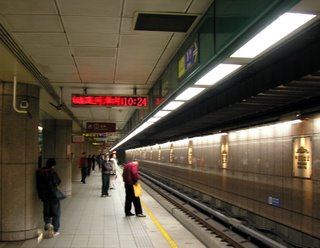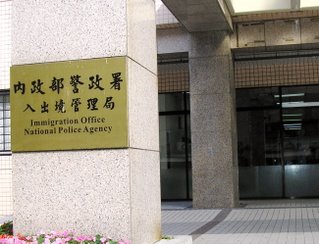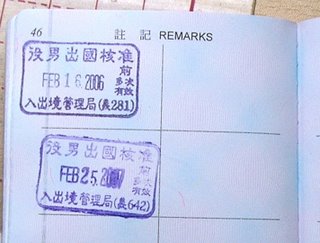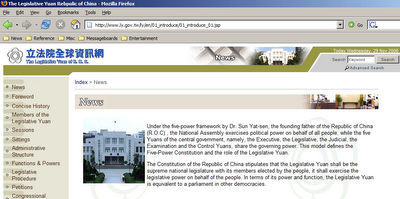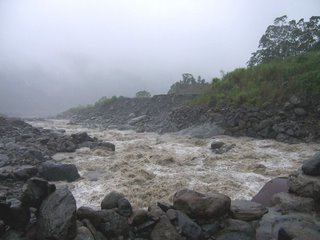 It's amazing how many relics from Taiwan's Japanese colonial past you can find around Taipei County's Ruefang Township. The mineral wealth and spectacular seaside sights led to the development of everything from the coal mines around neighboring Pingsi Township, to the old gold mining ghost towns and imperial chalets at Chinkuashih (金瓜石).
It's amazing how many relics from Taiwan's Japanese colonial past you can find around Taipei County's Ruefang Township. The mineral wealth and spectacular seaside sights led to the development of everything from the coal mines around neighboring Pingsi Township, to the old gold mining ghost towns and imperial chalets at Chinkuashih (金瓜石).Chinkuashih is surprisingly close to Jiufen. The two towns are connected by a winding 2.5 km road that runs through the rocky hills and mountains that line the northeast coast of Taiwan. A regular bus route runs between the two for the very affordable price of NT$22 for a one way trip.
But what fun would that be?
Feeling slightly giddy as I came down from Keelung Mountain, I thought it would be a good idea to walk the 2.5 km to Chinkuashih.
 The road to Chinkuashih just outside of Jioufen. (The one below the road with the funeral procession. How very auspicious.)
The road to Chinkuashih just outside of Jioufen. (The one below the road with the funeral procession. How very auspicious.)Many of us tend to think of winding mountain roads in Taiwan - especially those along the northeast coast as narrow winding deathtraps filled with gravel trucks roaring around blind turns at breakneck speeds. I didn't see any kamikaze gravel trucks along the way through there were plenty of kamikaze tour buses full of Hong Kong, Singapore, and Japanese tourists. But, the fact that I am here typing this right now indicates that yes it is possible to walk a narrow mountain road in Taiwan without getting killed... maybe.
All in all, the walk took about half an hour. It's not too bad going from Jioufen since the route is mostly downhill. Be prepared for a lot of odd looks from residents and drivers though.
The road eventually reaches the Chinkuashih bus station, located right outside the entrance to the Gold Ecological Park - a historic area complete with a museum on the old gold mining days, a restored Japanese era mining town, as well as a series of hiking trails passing through many ruins left over from the era. Considering the state of disrepair most of the old Japanese style houses in the major cities are in, it's interesting to see how they looked back when they were new. The entrance fee for the museum and exhibits is a very reasonable NT$100, though access to the park itself and the hiking trails is free.
 The path to the museum follows a set of narrow gauge tracks, similar to those that were once used to transport ore.
The path to the museum follows a set of narrow gauge tracks, similar to those that were once used to transport ore.The area also contains many historical sites worthy of note, including a chalet which once belonged to then crown prince Hirohito, the former site of a prison camp which once held Allied POWs during World War II, and the ruins of a Shinto temple - the Ogon Jinjia (黃金神社, lit: Shrine of Gold). Regrettably due to time constraints, I only had enough time to visit the last one.
The Ogon Jinjia was constructed in 1897 and moved to its current location overlooking the town and coast below in 1933 after mining operations began on the top of mountain where it was formerly located. The temple itself was dedicated to the guardian spirits of the miners who once worked in the area, and was once surrounded by groves of cherry trees. After the end of World War II, the temple was abandoned, vandalized, and eventually burned to the ground. It is said that the cherry trees themselves also disappeared after the fire, never to return. Today, all that remains are some of the stone lanterns, gates, and the foundation.
I'm not sure if the bare blackened husks of dead trees I saw surrounding the area belonged to the cherry trees, but they certainly lent a very eery feel to the ruins. The surrounding region is very beautiful (in the damp semi-depressing sort of way so common along the northeast coast). According to the scholarly experts at Godchecker.com:
The Japanese have 800 myriads of Gods which must cause a few congestion problems on their islands.So it's not difficult to see why the Japanese would build a temple around here.
They appear to have a tendency to worship anything if it stays still long enough and looks interesting enough. Photography has replaced Iconography and pilgrims can often be seen in London recording taxis and streetlamps for possible deification.
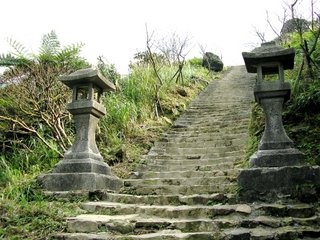 Dead trees flank the path to the temple. The inscription on the lanterns reads "奉納" (offering), and also appears on many of the ruins.
Dead trees flank the path to the temple. The inscription on the lanterns reads "奉納" (offering), and also appears on many of the ruins. A pile of stones by the path. The inscription on the top stone reads "奉燈" (offering lamp?), while the bottom stone reads "中央坑" (central tunnel). A talisman left by the miners perhaps?
A pile of stones by the path. The inscription on the top stone reads "奉燈" (offering lamp?), while the bottom stone reads "中央坑" (central tunnel). A talisman left by the miners perhaps? The base of the temple. For some unknown reason there is a rectangular pit about three feet deep in the floor.
The base of the temple. For some unknown reason there is a rectangular pit about three feet deep in the floor.Tags: [Taiwan], [Taipei County], [Shinto]
